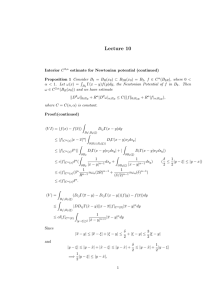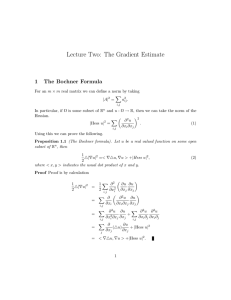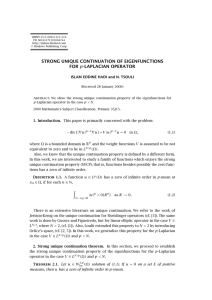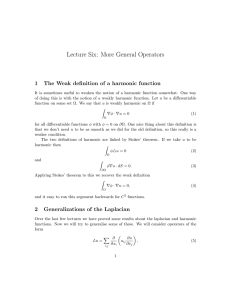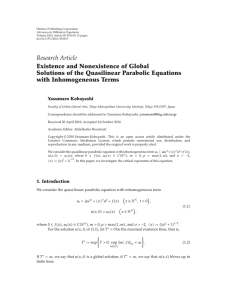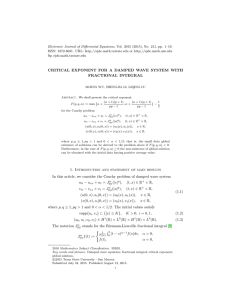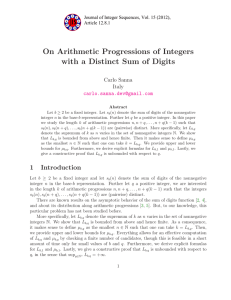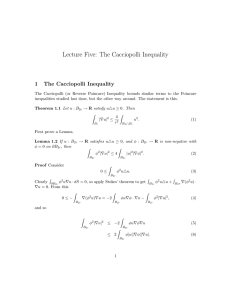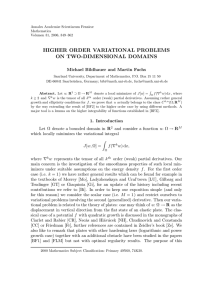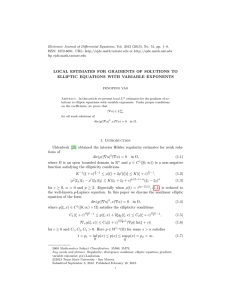Lecture Seven: Consequences of Cacciopolli 1 Consequences of Cacciopolli
advertisement
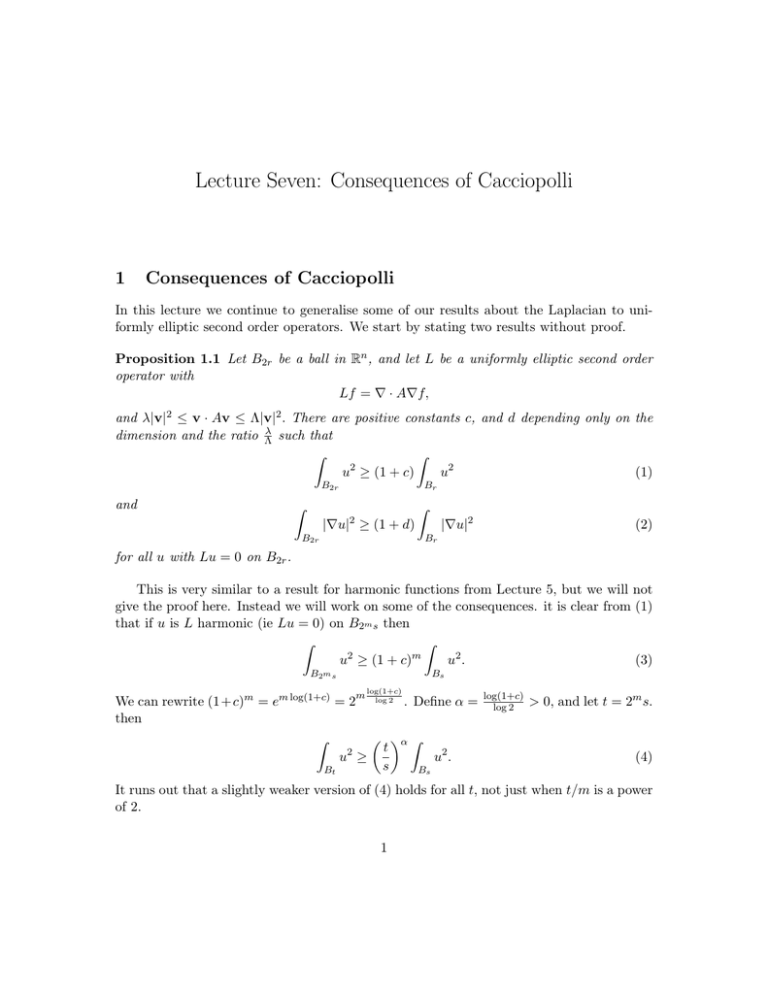
Lecture Seven: Consequences of Cacciopolli 1 Consequences of Cacciopolli In this lecture we continue to generalise some of our results about the Laplacian to uni­ formly elliptic second order operators. We start by stating two results without proof. Proposition 1.1 Let B2r be a ball in Rn , and let L be a uniformly elliptic second order operator with Lf = � · A�f, and λ|v|2 ≤ v · Av ≤ Λ|v|2 . There are positive constants c, and d depending only on the dimension and the ratio Λλ such that � � u2 ≥ (1 + c) u2 (1) Br B2r and � � 2 |�u|2 |�u| ≥ (1 + d) (2) Br B2r for all u with Lu = 0 on B2r . This is very similar to a result for harmonic functions from Lecture 5, but we will not give the proof here. Instead we will work on some of the consequences. it is clear from (1) that if u is L harmonic (ie Lu = 0) on B2m s then � � 2 m u ≥ (1 + c) u2 . (3) B 2m s Bs m log(1+c) We can rewrite (1 + c)m = em log(1+c) = 2 log 2 . Define α = then � �α � � t 2 u2 . u ≥ s Bs Bt log(1+c) log 2 > 0, and let t = 2m s. (4) It runs out that a slightly weaker version of (4) holds for all t, not just when t/m is a power of 2. 1 Proposition 1.2 Let t > s > 0 be real numbers. If u is L harmonic on Bt then � �α � � t 2 u2 . u ≥ 2s Bs Bt Proof Take 2m s ≤ t ≤ 2m+1 s. Since u2 is positive we have � � u. u≤ B 2m s (5) (6) Bt We can estimate this bound by (4), so 2mα � � u≤ Bs u. (7) Bt Also mα 2 (m+1)α −α =2 s ≥2 −α � �α t . s Plugging this into (7) gives � � 2 u ≥ Bt t 2s �α � u2 (8) Bs as required. We can do exactly the same calculation for the Dirichlet energy to give Proposition 1.3 Let t > s > 0 be real numbers and let β = on Bt then � 2 � |�u | ≥ Bt t 2s �β � |�u|2 . Bs There is a nice corollary to this Corollary 1.4 Take u : Rn → R an L harmonic function. If � u2 < ∞ Rn then u = 0 on Rn . 2 log(1+d) log 2 . If u is L harmonic (9) Proof Suppose u is not identically zero, say u(x0 ) �= 0. Then � u2 = � > 0, B1 (x0 ) so � � 2 u = Bt (x0 ) t 2s �α �, which goes to infinity as t gets large. Now we will prove one of the two inequalities at the start of this lecture. Recall from the proof of the Cacciopolli inequality last time that if u is L harmonic on B2r then � �2 � � Λ 2 2 φ2 |�u|2 u |�φ| ≥ 4 λ B2r B2r (10) for all φ ≥ 0 with φ = 0 on the boundary. Also note that |�(φu)|2 = |u�φ + φ�u|2 ≤ 2|u�φ2 | + 2|φ�u|2 by Cauchy­Schwarz. Putting these together gives � 2 |�(φu)| B2r � 2|u�φ2 | + 2|φ�u|2 B2r � � � �� Λ 2 ≤ 2 4 +1 u2 |�φ|2 . λ B2r ≤ (11) (12) Notice that φu is zero on the boundary of B2r , so the Dirichlet­Poincare applies, and we have � � c(n) 2 |�(φu)|2 , (13) (φu) ≤ r2 B2r B2r so �� � � � � c(n) Λ 2 2 (φu) ≤ 2 4 +1 u2 |�φ|2 . (14) r2 B2r λ B2r Pick � φ(x) = 1 2r−|x| r if |x| ≤ r; if r < x ≤ 2r as usual to give c(n) r2 � 2 u2 ≤ 2 r Br �� � � � Λ 2 4 +1 u2 . λ B2r \Br 3 (15) Therefore ⎛ ⎞ ⎝1 + �� c(�n) �⎠ Λ 2 2 2λ + 1 as expected. 4 � 2 � u ≤ Br B2r u2 (16)
